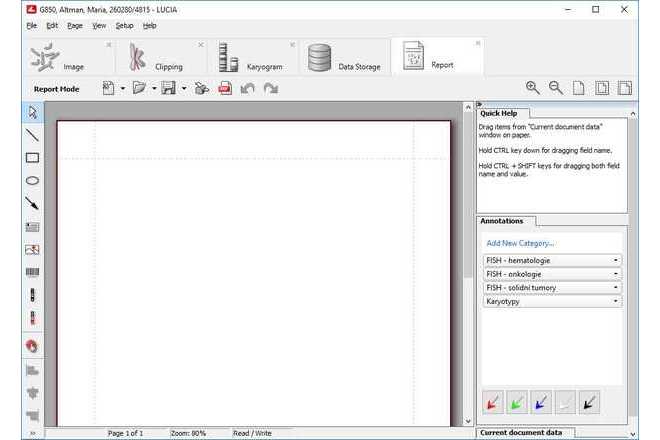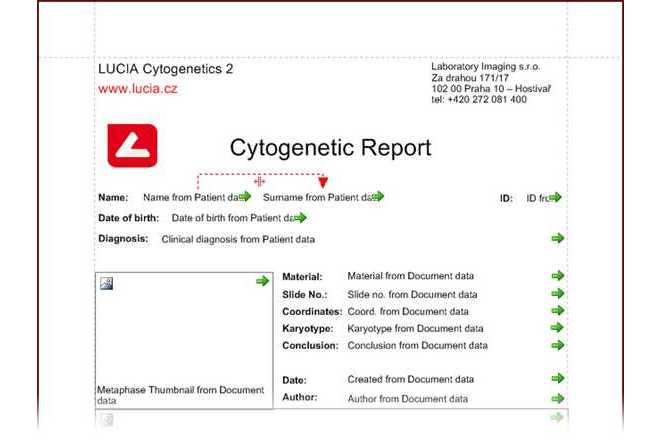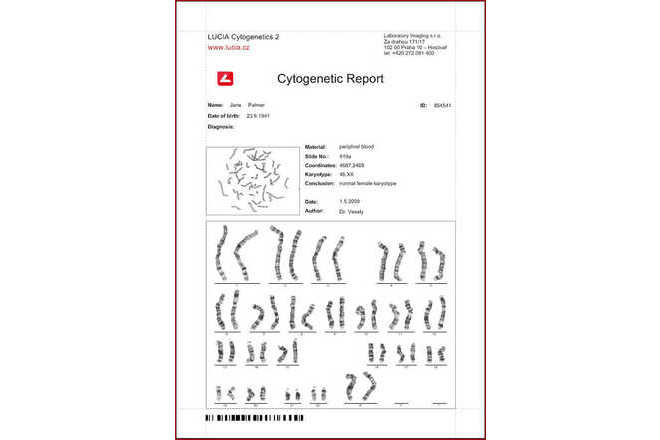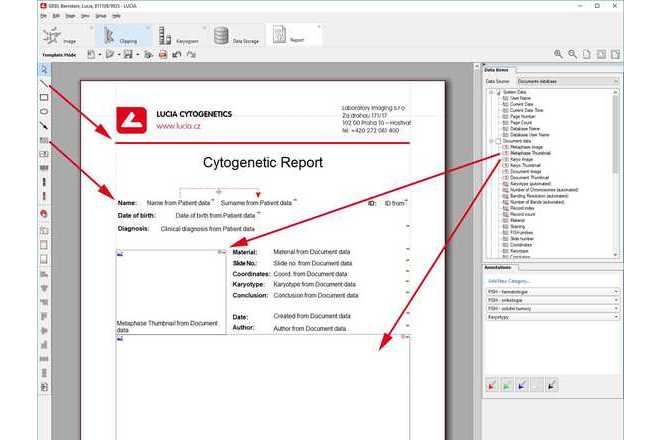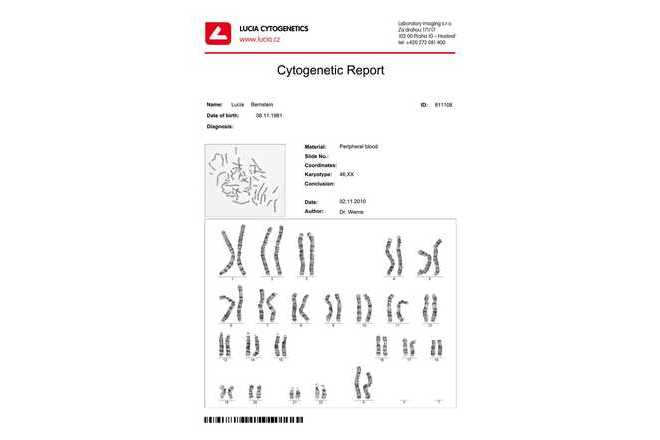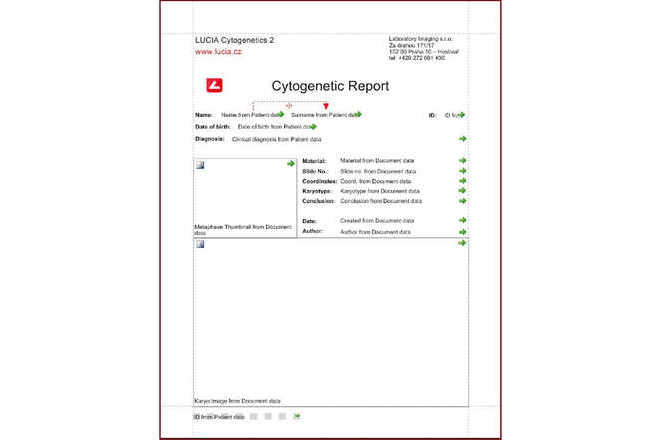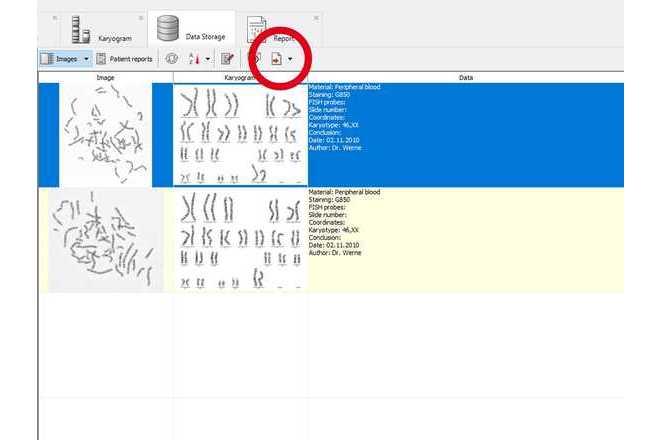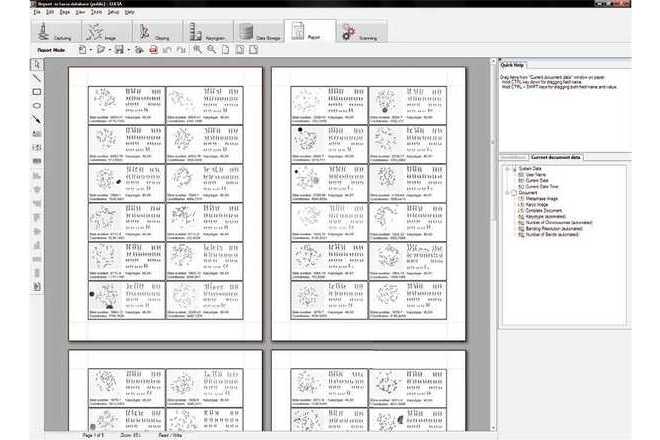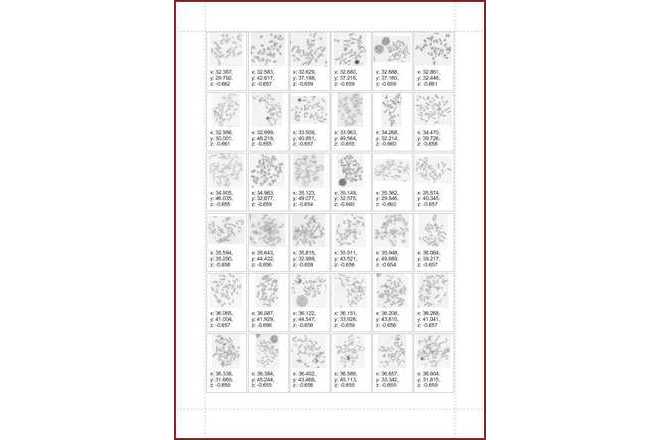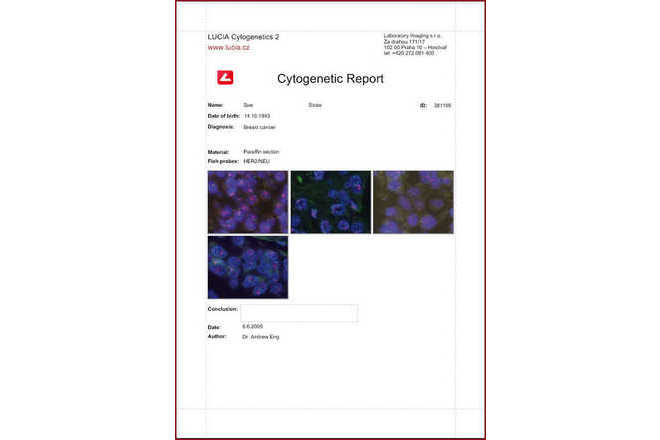According to us, the results of your hard work deserve special treatment - to be well arranged and to look professional. For this exact purpose, LUCIA Cytogenetics comes with the mighty Report Tool, a combination of a text editor, presentation creator and an automatic data-to-print-output processor.
-
All tools available within one window.
-
Inserts text fields, images and annotations by drag and drop.
-
Easy formatting, multiple object alignment and distribution.
-
Output options: PDF, print, editable (*.rpt) stored in the database.
-
Standard user interface common to most document editors.
-
Simple vector objects and external images such as logotypes can be inserted to the report.
-
The editor supports simplified input of system data - using “ drag and drop ” drag the date, time, username, patient's name, images, barcode, etc. directly into the report.
-
Headers and footers repeating on each page.
-
Smart display of patient data. For example, a karyogram appears in a report only if it is available. Otherwise, an image of metaphase is displayed.
-
Unlimited undo history.
-
And many more...
-
A single click creates report from a predefined template.
-
The use of the LUCIA Cytogenetics database module expands options for creating reports. Reports can be generated for a single image, multiple images, multiple patients, or reports with automatic metaphase search results.
-
Different report templates can be used to generate varied reports from the same data.
-
The anchoring function allows you to further improve the formatting or the final location of individual objects. In combination with dynamic-sized text fields, for example, a perfect layout of the fields “ name ” and “ surname ” for names of different lengths can be achieved.
-
Create simple summary reports using automatically repeated objects - blocks .
-
A general repetition object called band allows you to insert an unspecified number of patients, images or other data. The band repeats itself until the number of records is reached.
-
Bands can be nested one into another, each having a different data source.
-
Bands use a sophisticated page breaking control mechanism.
-
Horizontal alignment is available for image galleries.
